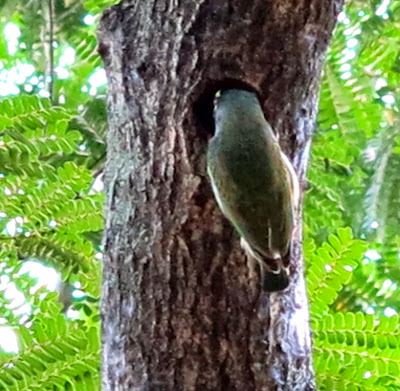I come across piled roots of trees, along highways, or in the construction sights. Trees are cut down, whenever there is construction of roads and buildings. The tribal communities are allowed to gather firewood from forests, without felling trees. However poachers enter forests to steal timber and to sell the rest as firewood. It is estimated that we are likely to loose about one third of our forest cover in India by 2050, at the rate forest areas are used for mining, construction, industrialisation etc.
Trees are the first casualty whenever there is a building or development activity.
There was a commendable effort undertaken recently to transplant a tree of 80 years old in the kilpauk Medical College, Chennai, from a location that was going to occupy the new metro rail. After about ten days of intense activity and effort, the news report suggested that the transplanted tree showed good signs of the prospect of survival.
Anna and I tried to transplant few shrubs in our home. We have had more than fifty percent success although we had no skills to do so. So transplanting trees is an option, although it is effortful and costly.
Trees have a history and story. We destroy it without paying enough attention to it.
When I visited a home, I happened to notice an album of the trees they have had to cut or lose in the storm and rain. It was refreshing to hear from them their recollections of the stories associated with those trees. Our friend spoke sorrowfully about the mango tree, that got uprooted in the storm, which he used to climb as a child. Often some trees have been part of our lives for years.
When, Arpit and Anandit visited their grandparents home once, when they were young, the first question they asked was, 'What happened to the Gaua tree ?' That is the tree they loved climbing to pluck the fruits. They felt the loss and talked about it through out the holidays.
We associate emotionally with trees when we plant or fell them. Their presence or absence has a bearing on us. Therefore trees do not fall into the disposable category. They have linkages and connections with our history and story.
With the land being viewed as real estate, we are under pressure to make use of the land for maximum built up area. I wish, we would view the land differently!
The land is also for a garden, meadow, park, children's play area, forest, etc.
I wish, we would cut a tree as the last resort, after exhausting all other options to preserve it! The retribution for a felled tree, is to plant five other saplings according to the environmentalists!
M.C.Mathew(text and photo)
































